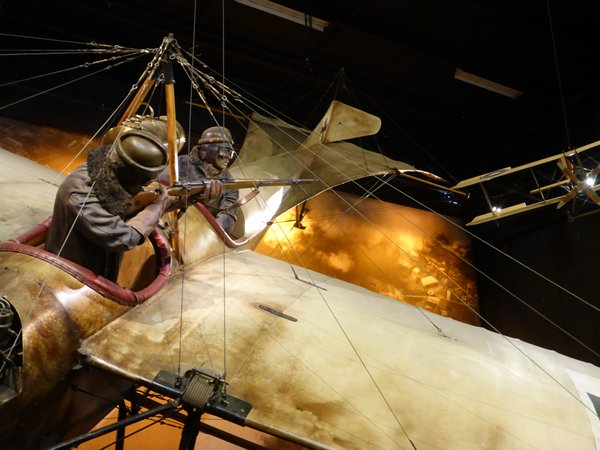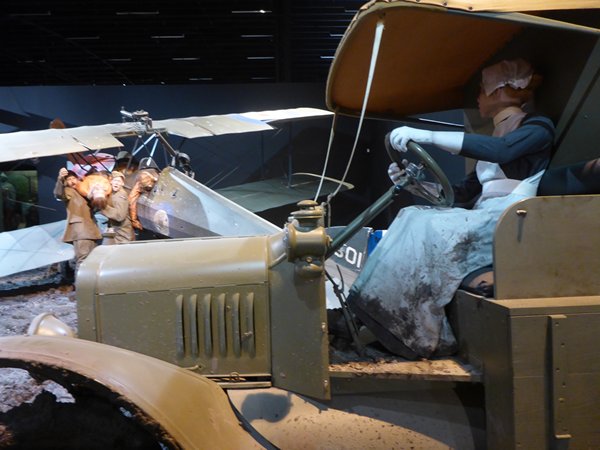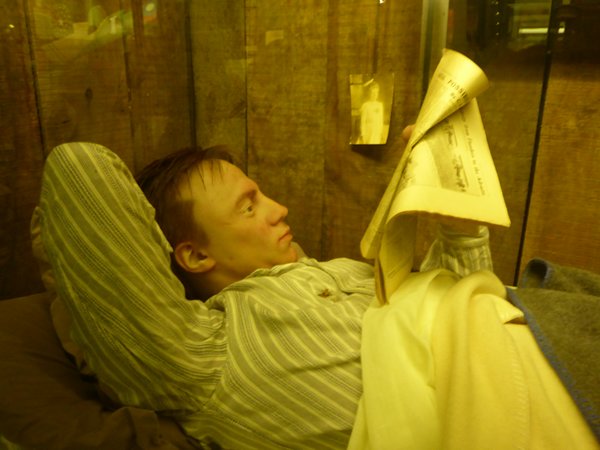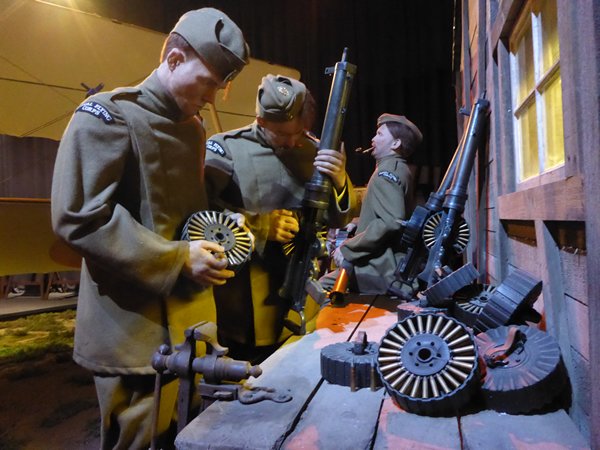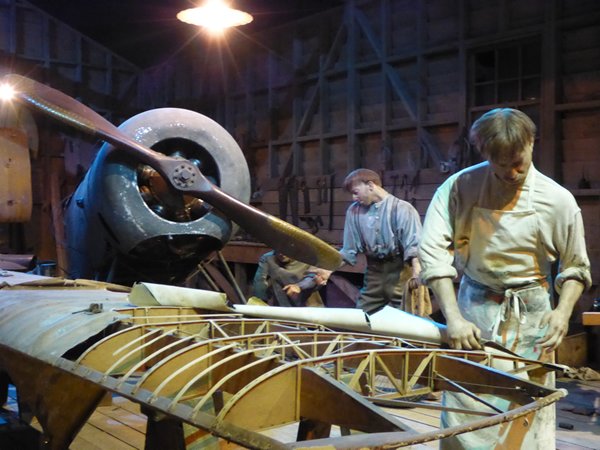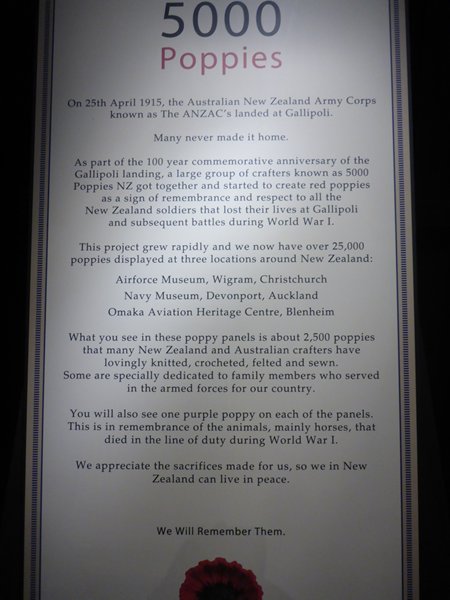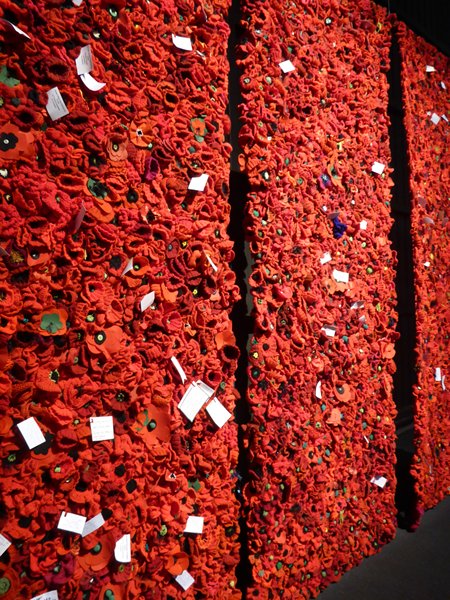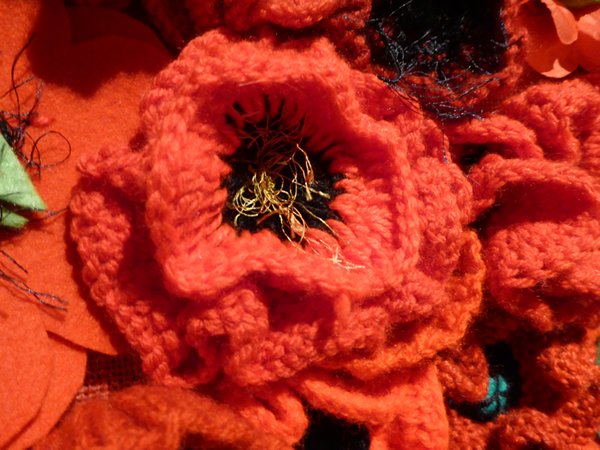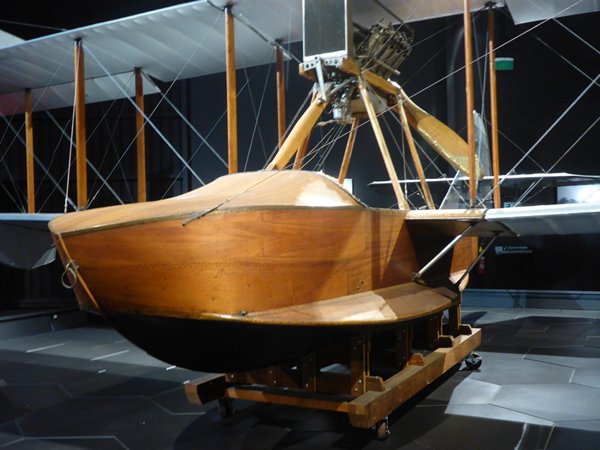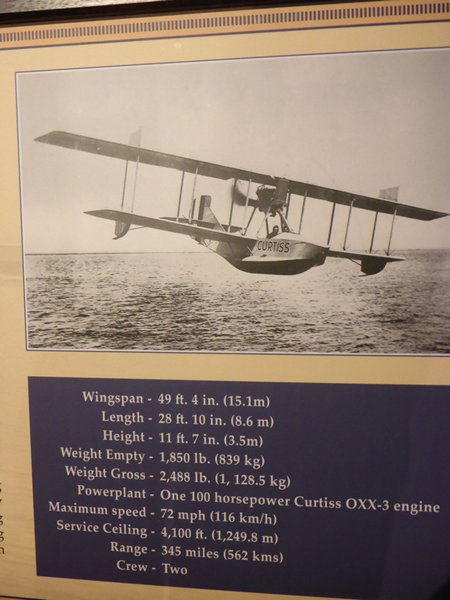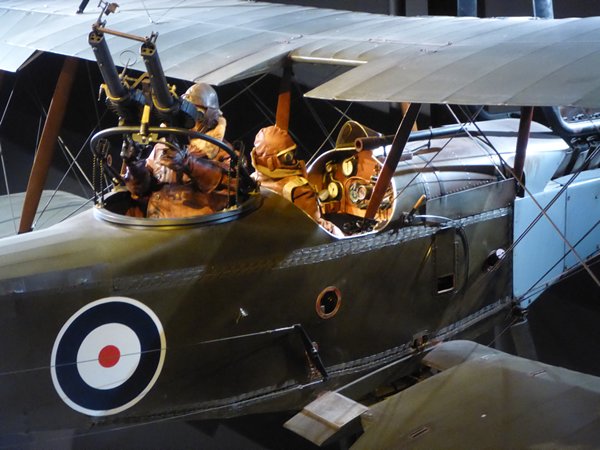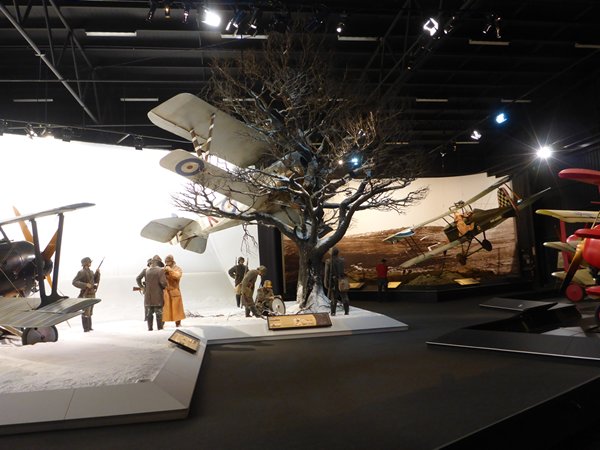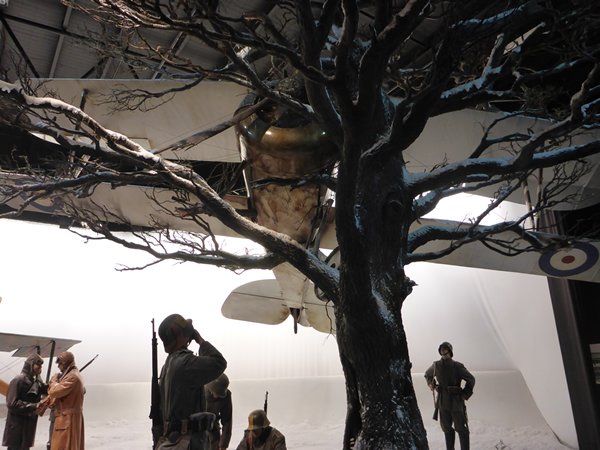True to the Forecast of Rain Our last day in Blenheim

|
Sir Peter Jackson and his team capture WW1 and WW2 themes in the Knights of the Sky and Dangerous Skies exhibitions at the Omaka Heritage Centre, Blenheim. It rained nearly all day and over much of New Zealand that day, which was to prove significant for us as I will explain later. In two aircraft hangers at the small Blenheim Airport Sir Peter Jackson has applied his penetrating intelligence to the creation of numerous cameo scenes from both World Wars. Amidst original and replica planes on display, full scale personnel live their lives in camp dormitories, on the field, in the air, beside crashed planes and in the workshops. We stand silently by like Alice in Wonderland and witness tyre tracks in the mud made by a nurse arriving at a crash site, the freezing snow beneath a plane stuck in a tree where the lucky pilot is being questioned by his captors. A crew discussing their flight with the mechanic before take-off and men in the workshop creating new aircraft from wood. The ‘people’ are so real that standing by them I waited for them to take their next breath. The Red Baron’s life is recorded without bias down to his iconic furry boots, he was not one to suffer cold feet after all was he. After he crashed and lay dying from a gunshot wound beside his plane British troops are busy stealing mementoes from the site, a portrayal that has caused some controversy since the exhibition opened. But alls fair, or unfair, in love and war. The story of the fearless female Russian aviatrix Lilya Litvyak is presented affectionately with a model of her gazing towards her beloved skies, her chest a gallery of hard earned medals. She represents a country that suffered losses greater in number by far than any other in modern warfare, an estimated 14 million people. We watched a digitally restored film of a rear gunner rummaging around in the floor of his plane and finding what he is looking for. He then holds the bomb by its tail and drops it like a fish overboard, a strangely funny scene. We sat in the ruins of a high building in Stalingrad with the cacophony of an air bombardment going on around us and sense the claustrophobic terror of being trapped. The walls of the exhibition halls are black and spotlights create a light appropriate to the era and the darkness of war and also of course the danger of the night skies. A truly remarkable exhibition, and I wonder if it is portable and maybe one day will do the rounds of European exhibition halls. I hope so. It felt like a come down, walking in the rain back to the car. We made our way into Blenheim to search for supper. The streets were empty on this wet Sunday but we found a nice pizza restaurant and cheered ourselves with a bottle of Marlborough Sauvignon Blanc. A queen of wines with its sharp fruity flavour to enhance any pizza. That night it rained heavily back on our little tent pitched next to the fine 19th century villa with its kaori ceilings and doors. The house was built by a doctor and the present owners have plans to restore it to its original glory. In the meantime campers enjoy the ambience of the fine trees he planted and the pretty stream, Spring Creek after which the village is called, running around the perimeter of the grounds. The next morning promised a better day so we drove to Picton to explore the town from which our ferry would take us back to the North Island the next day and to visit the Edwin Fox, the oldest surviving ship that brought 751 immigrants to NZ over four voyages and made one voyage from London to Australia. Built using Burmese Teak no expense was spared in either her construction or her maintenance over the years of her sailing career. Which is partly why she still exists today. On every third voyage her bottom was re-coppered at considerable expense. She reminded me of Henry V111’s flagship the Mary Rose, raised and preserved in Portsmouth Naval Dockyard. On both one can now walk around and get a feel of life onboard back in their working time. The Edwin Fox did 34 part world voyages before her roles changed and at one point she was a refridgeration ship storing up to 1400 lamb carcasses at a time. Now she is permanently dry docked in the middle of the shipping activity in Picton, an appropriate retirement for a fine vessel. We were sitting on the pretty waterfront in Vicky just taking in the view, when Rob’s phone started ringing. Rob put it on to speaker so I could hear the conversation too. The caller was Jeannie from Meridian Passage whom we had come across before in brief greetings as we came alongside the pontoon near them to go ashore. Her tone was distracted and very concerned. “Rob I am looking across at Zoonie and she appears to be very low in the water. Merv and I are making our way to her, here he is in the dinghy, I’ll call you back once we are on board.” A few moments later “We’ve broken in and are bailing her with buckets, the water is coming in rapidly where are the skin fittings?” We explained they were all closed except for the bilge pump outlet and cockpit drains. Over the next two hours the drama unfolded with frequent calls from Jeannie to update and ask us for more details. Zoonie was bows down and sinking fast, water pouring in from two sources including over the sink which was now near the level of the rising water. Three overalled and helmeted firemen were brought out to Zoonie in a tiny inflatable tender along with their pump (just imagine the sight of that) which took them a few minutes to start, but once in operation it made short work of returning the river water to the place from whence it had come. Merv had located the bilge outlet closure lever in the aft heads cupboard and once that was closed the water stopped pouring in and Zoonie’s flooding was over. “Ok with you if we tow her to the main pontoon outside the office, Rob, that way we can keep an eye on her and she is easy to access if necessary.” As I type this Zoonie is still in that exact same position. Of course this activity late on a Sunday afternoon had attracted a fair crowd on the shore and over the canopy bridge and amongst them were the good folk who had raised the alarm with a security officer. From being the Christmas ship covered in seasonal decorations, Zoonie had become the sinking yacht in Whangarei Marina that made the national and local news and newspapers. After the traumatic devastation caused by Cyclone Debbie, of which this incident was a part, the media needed a happy ending story of human altruism and Zoonie was the catalyst. The alarm was also raised by the savvy cruising youngsters who could recognise a yacht in trouble at a thousand paces. They raced back to their mom on Enough and Miriam also raised the alarm. Once Sharron and Brian from the marina were aboard one rescuer said “Should we break in?” To which Sharron replied in a fraction of an instant, “Yes” and our gas cylinder was grabbed for the purpose and used to instant effect. We felt pretty helpless where we were so we drove to the ferry terminal to see if we could catch an earlier ferry than the one we had booked five days before that was to leave at 11.00am the next day, Monday. “Well it leaves in 45 minutes and that won’t give you enough time to get back to Spring Creek and return here before it sails.” The sympathetic lady reasoned. So ironically we would be on the same ferry we had already booked but would head straight back to Zoonie rather than spend the planned few days around the Hawkes Bay area. Next morning in camp we had time to chat over her garden fence with the lady manager of the camp as she planted her spring seedlings and tell her our news while her lovely young dog enjoyed a comforting cuddle, comforting for all of us under the circumstances. We then fed Eddy the eel with some squeezed bread balls, that way they sink and the greedy ducks can’t get them before driving with heavy hearts to the ferry. Since our arrival in NZ we had worked hard on the many jobs to be done on Zoonie and when we left on our camping trip she was in a state of near readiness for the new season back in the tropics. Now we had to face the repair work and all the time consuming delays, waiting for parts, waiting for the work to be done, the inevitable errors and re-doing of work and that’s only if our insurance company will play ball and accept our claim. Still we’d worry about that later. Take everything a step at a time. The first step being the small matter of the ten hour drive back to Whangarei. While sitting on the ferry with two German Lads we told our sad story to them. Then one of them turned his coffee cup around to show an advertisement for the Top 10 Holiday Park Company which read, “Something to float everyone’s boat!” That made us all laugh. I think the adrenalin had started coursing through our systems because the drive back was easy. It was dark by half six and we each did around five hours driving during which time the roads were almost empty for the 860kms except for two houses that were on the move. It’s a big thing in NZ, to visit a house show area, all up high on wooden stilts ready to be loaded, chose the home of one’s dreams and have it delivered to the prepared site. A bit like Zoonie, raised, moved and (re) connected. |
